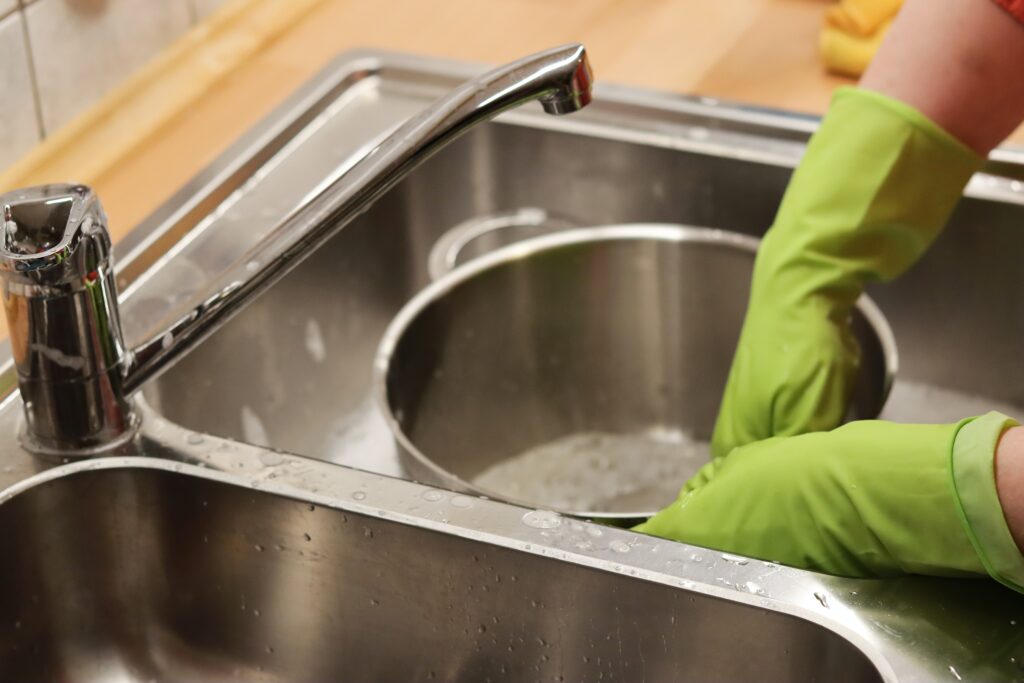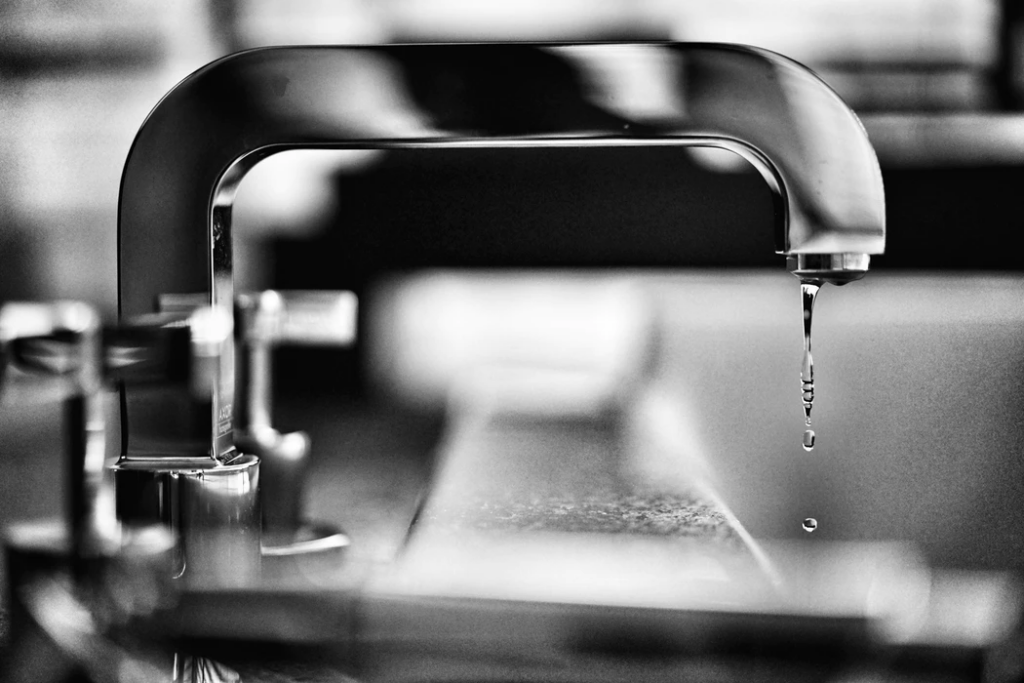In many homes, the kitchen is the central hub, the heartbeat, the one-room where all family members can come together, share in the bonding process of collective cooking, then sit and enjoy a home-cooked meal together. Holidays like Christmas and Thanksgiving bring extra life to this space. The wear and tear the kitchen suffers on a daily basis may not show up immediately but over time, different problems will arise. These issues can become compounded if not resolved in a timely manner. Try these tips to whip your kitchen back into tip-top shape in no time for barely any cost.
1. The Slowly Draining Sink

Is there anything more annoying? Not very many people wash dishes by hand anymore, not since the dishwasher made its appearance on the market. But for those who continue this practice, this can be extremely frustrating. The accumulation of dirty water when all you’re trying to do is get the sink cleared and cleaned is disheartening, to say the least. Washing fresh vegetables under running water or draining pasta over the sink become dreaded tasks. You are not alone in this battle.
Yes, the build-up can result because of hard water mineral deposits or simply the age of the pipes. Rust and degradation do occur naturally as iron and water constantly interact. Foodstuff, oil, even hair, and other particles small enough to fit through the drain cover can all clog the pipes. If you are lucky to source the root of this problem early on, you can swiftly take action to fix the issue. There are many drain cleaners out there that can wash away food remnants and such from your sink.
Purchase one of your choosing and pour down your kitchen sink and wait a certain amount of time as directed. You may be asked to follow up on this procedure with the addition of hot water. Alternatively, you may want to make your own cleaner. Use baking soda and hot water with a ratio of ½ to 1. Let sit for 5 minutes then pour a cup of vinegar down the drain. A chemical reaction will occur. This simple recipe can work wonders in blasting away grime for free-flowing water.
You may also want to try a zip-it tool. Although being very inexpensive, it has been praised for working wonders in a fast way. Insert the tool into the sink, move back and forth to snag hair and other junk that is caught in there. Dispose of easily in the garbage.
For mineral accumulation, try installing a water softener. This will cut down the harshness and quantity of minerals like calcium and magnesium that tend to be the culprits causing the clogging. Instead, softer minerals like potassium will be substituted.
2. The Leaky Faucet

If it’s not blocked, it leaks. It can very much feel like if it isn’t one thing, it’s the next. That something is always going wrong. Don’t fret. Just like clogged drains, if you become aware of the leak quickly, much less damage will result. The cause may be old and aging pipes, loose joints and fittings, or the use of weak material. A physical blow could also cause a leak. Whatever the cause, it can be resolved.
Do random but frequent inspections of your pipes. In over 20 years, no pipes or fittings have been changed, you might want to start thinking of replacing them. Don’t wait for the leak to start to take action. Should you observe a minor leak, get on it right away. Get out your tools and fasten tighter anything that may have come loose.
Notice a crack in a joint, swap it out. If you cannot yourself, call a plumber. If you’re having difficulty and live in the Perth area, you can visit www.tunnelvision.com.au and contact these plumbing professionals who have over twenty years of experience. No problem is too big or small. No damage to the area surrounding the problem will be perpetuated.
3. The Blocked or Broken Garbage Disposal

You might look at the garbage disposal as a tough piece of machinery that can withstand anything thrown at it. So you might give in to the temptation to drop chunks of meat and bone, whole eggs, corn husks, and grease in there. Please resist the urge. None of these things should be disposed of this way. At first, the disposal may react like a champion, grinding down everything you give it, but after a while, the grinding stops, the groaning starts, and problems arise.
Turn on your faucet and allow water to run while you’re placing appropriate food like vegetables and fruits into the disposal. It’s best if the water is cold so that oil and grease don’t cling to the blades. Allow the garbage disposal to continue operating for an extra 30 seconds after you’re done to be sure everything has been ground.
Even though you take these precautions, have your unit checked bi-annually or annually as suggested by the manufacturer. Should you hear any strange sounds or get a whiff of any unpleasant smells, call a professional. Help your disposal along by disposing of foods in other ways. If they can be composted, do that. Give your pets a treat and throw the bones to them instead.
Also very important, this piece of machinery should never be played around with. Be very cautious with children and the elderly who might be tempted to stick their fingers in there. Grave accidents can happen and this is something you want to avoid. You can find more useful information on https://www.lexsplumbing.com/.
There will be hiccups and holdups. Things will leak, get clogged, and break down. This should be expected but you can be prepared. By taking care to observe your pipes, drains, and disposals, you can be on top of maintenance needs. Do not abuse the garbage disposal. Only place things in there that can be disposed of in that way. Use cold water or ice chunks to keep grease from building up and have it serviced regularly. Have a plumber’s contact information on hand for those works you cannot accomplish yourself. Getting a little help is necessary for us all at one point or another.
